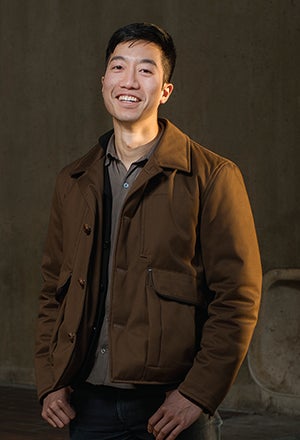 To unearth the hidden, Morgan Ng has pored through piles and piles of what he calls “humble documents:” city archives, architectural drawings, notary records, correspondences, and commercial account books. His efforts are all in pursuit of what lies beneath the grandeur of military architecture constructed during the Renaissance.
To unearth the hidden, Morgan Ng has pored through piles and piles of what he calls “humble documents:” city archives, architectural drawings, notary records, correspondences, and commercial account books. His efforts are all in pursuit of what lies beneath the grandeur of military architecture constructed during the Renaissance.
Almost every 16th-century city had a wall around it, says Ng, a doctoral candidate in architectural history and theory. “I’m looking at the need for secrecy in these city walls and fortresses, which were built not only to protect the city from external intruders but also to suppress internal rebellion,” he says.
These monumental structures were designed to visibly demonstrate the strength of the ruler, says Ng. “However, the same buildings also enclosed a hidden world in which rulers could conduct surveillance or transfer military supplies and men unseen,” he says.
His research was made possible by research funds at the Graduate School of Arts and Sciences (GSAS). With the support of a donor, Ng spent four months as a research associate at the Gabinetto Disegni e Stampe at the Uffizi Gallery in Florence, Italy, where he had access to the world’s premier collections of early modern architectural drawings.“The funding allowed me to do a case study on a city that had been conquered by Pope Paul III,” Ng says. “The pope constructed a fortress with a secret passage that cut across the entire city, allowing the ruler to funnel in men or make an emergency escape, and to crush any uprisings fomented by the local nobility.”
As a result of this work, Ng says, he was able to choose from a number of the most competitive and prestigious fellowships in his field to complete his dissertation. This fall, he will travel to Rome to delve into original source materials. This opportunity is only one of the reasons that this trained architect is grateful he came to GSAS.
“I came to Harvard because of its strong ties to the world of practice and to the Graduate School of Design,” he says.
This connection to the wider University means he has friends in many fields and guidance from faculty who bridge disciplines.
“My advisor, Alina Payne, is an incredible thinker and intellectual leader in architecture, literature, and the history of science,” Ng says. “Her support has made all the difference in my research.”
Teaching art and architecture to undergraduates also had a major impact on his experience at Harvard. “I like working with students, many of whom have never been exposed to the study of architecture,” he says.
For Ng, the study of historical texts has enduring relevance.
“We face the same kinds of questions today: What is the psychological effect of surveillance? How do we design firewalls to protect classified information? What roles do secrecy or political spectacle play in promoting national security?” he says.
“The study of the past was valued in the Renaissance as a means of understanding the complexities of the social and political world; the humanities have a similar role to play today.”